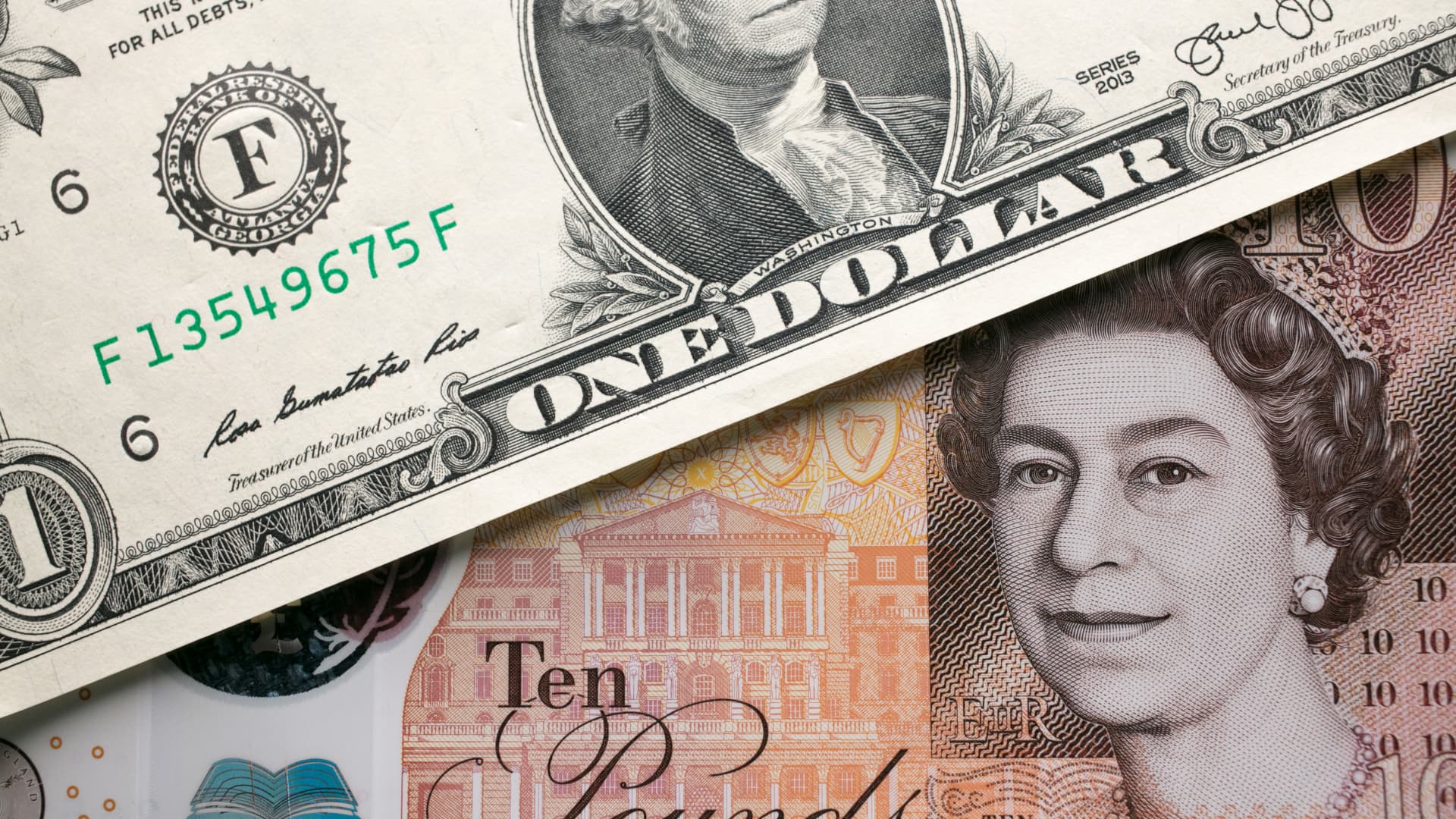
The British pound continued its slide against the U.S. dollar this week, hitting a new record low against the greenback Monday. Sterling briefly touched $1.0382 i n Asia trading — the lowest level on record since 1971— as investors weigh the cost of U.K. Prime Minister Liz Truss’ sweeping tax cuts and investment incentives that will be financed by further government borrowing. “The pound’s decline since last week shouldn’t be misunderstood as a mere consequence of dollar strength. It is a consequence of an extremely risky budget by the new chancellor and a rather timid Bank of England that so far has only raised rates reluctantly despite all the clear pressures,” British economist Jim O’Neill told CNBC on Monday. The former Goldman Sachs Asset Management chairman and former U.K. Treasury minister said the Bank of England will have to raise interest rates “more aggressively” as a result, and the government will need to possibly “roll back some of its fiscal ambition” for the pound to recover. Sterling’s relentless slide this year reflects the difficult macro environment in the U.K., which is struggling with its worst cost-of-living crisis in decades and a series of futile interest hikes that have so far failed to rein in inflation. Parity with the U.S. dollar? Many market watchers believe there could be more pain ahead for the embattled pound. “The pound-dollar is likely to remain vulnerable in the near-term and a test of parity with the dollar cannot be ruled out,” Abhilash Narayan, senior investment strategist at Standard Chartered , told CNBC Pro. Goldman Sachs European strategist Sharon Bell said the bank expects the pound to trade at around $1.05 over the next three months. Alvin Tan, head of FX trading at RBC Capital Markets, has a year-end target of $1.04 on the pound and said there is “growing risk” of the currency hitting parity in early 2023. Meanwhile, Morgan Stanley strategist Graham Secker is even more bearish; he sees the pound hitting $1.02 by year-end. Winners Secker is overweight the blue-chip FTSE 100 , which he believes is “arguably the ultimate ‘weak FX’ play.” In a note on Sept. 26, Secker noted that 40% of the index’s capitalization is derived from stocks that report revenue in U.S. dollar. These stocks collectively contribute nearly 60% of the index’s earnings, he added. Goldman’s Bell also likes the “internationally exposed” FTSE 100 — which comprises “a lot of commodity, global consumer and health care companies that make money outside the U.K.” “Typically, when sterling falls, the FTSE 100 rises,” she told CNBC Pro. “It’s typically inversely correlated between the two.” Read more The best global performers last week include an energy stock analysts say could jump 15% Asset manager says one FAANG stock looks ‘very attractive’ in the medium term From the Fed to Europe’s currency crisis, here’s what’s behind this selloff in financial markets James Morton, founder and chief investment officer at Santa Lucia Asset Management, believes U.K. companies in the natural resource sector will be a particular beneficiary of a weaker pound. “Most natural resource companies have the bulk of their revenues priced in U.S. dollar, whereas their cost structure is likely to be denominated by weaker currencies relative to the dollar. This is not limited to the natural resource sector, but quite a big chunk of the U.K. stock market,” he said. Meanwhile, Standard Chartered’s Narayan said he remains overweight on U.K. equities. “The fiscal stimulus should be a marginal positive for growth while pound weakness should support corporate earnings … Additionally, the U.K. should benefit from its relatively high exposure to defensive, value-oriented sectors such as energy and financials, as well as the high dividend yield on offer,” he said. Losers While market watchers remain largely positive on big-cap firms, Goldman’s Bell believes their small and mid-cap counterparts are likely to fare worse. “The losers in the U.K. are the small-and-mid cap companies that are importing raw materials, which has now become more expensive. Retailers are a good example. Some of the domestic banks are also sensitive to sterling weakness. The FTSE 250 , which is more domestic than the FTSE 100, will also tend to suffer, all else equal, as sterling falls,” Bell said. Morgan Stanley’s Secker also advises against looking at more domestic U.K. investments such as the FTSE 250, “which tend to underperform when pound-dollar is falling.”
